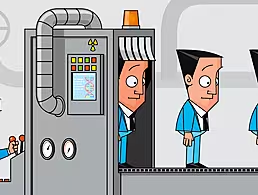Healx CTO Meri Williams brings her experience rapidly scaling technology teams to the new era of remote working.
The Covid-19 pandemic forced many organisations to switch almost overnight to fully distributed working. This involves a lot of change and adjustment for any team, never mind a rapidly scaling technology team.
In the early days of the pandemic, some companies even stopped hiring, unsure of how to translate an in-person recruitment process to a fully online one. But, as the months went on, it became apparent that this disruption would not be short term, and so we all had to adjust to scaling while distributed.
The good news? Remote working isn’t a new thing. In fact, we can learn a lot from companies and organisations that have always been widely remote or distributed-by-default such as Buffer, DuckDuckGo and Automattic, including how to effectively attract, recruit, onboard and retain talent.
From these lessons, I believe that many of the challenges of distributed scaling are actually the same as very intensive in-person scaling – it just means you have to make certain investments in people and processes earlier.
I’ve done some serious scaling of technology teams in my career. At the UK Government Digital Service, for example, we grew the team from 30 to 300 in under a year to deliver Gov.uk. And at Monzo I oversaw 500pc growth in my team over 18 months, with the challenger bank growing from under a million to more than 4m customers during the same time. Even my more easy-going assignments have involved doubling teams in nine to 12 months, at M&S Digital, Moo and now at Healx.
So, what should you invest in to scale your technology team effectively, even in these unprecedented times?
1. Refining your recruitment process
Look at your recruitment process with fresh eyes, from the perspective of a candidate who won’t get to visit the office or meet the team in person. How do they form an impression of you as a tech employer?
Consider your website, blog, videos or presentations from team members to make sure you’re sending the message you want to send. Run your job specs through a service such as the Gender Decoder to make sure they will appeal to a broad range of candidates. Test out tools for remote pairing interviews or similar ahead of time to ensure the mechanisms don’t interfere with reliable evaluation of candidates.
And, as always, try to make the interview mirror how work is really conducted in your organisation. Don’t do whiteboard coding interviews unless you actually write code on whiteboards daily!
2. Crafting good interview questions
Help your team to take a more structured approach to evaluating whether a candidate fits with your company values and will add to your culture.
What matters most to you as a company? And what questions focused on someone’s past experience (which is known to be the best predictor of future behaviour) will elicit responses that help you assess that?
Also, take a good look at your current team, and consider how different candidates will add to your current culture.
3. Knowledge management
As soon as you start to scale your team, any deficiencies are amplified. You’ll find out fast which things aren’t well enough documented, or which information is tough to find, based on how people struggle when they join your organisation or move between teams. What does an engineer need to know to understand the domain you operate in or find their way around the code base? How will they understand your team’s working process, pick up a story, deploy to production or investigate an incident?
Ahead of scaling, ask your existing team to make time to think ahead about what knowledge is essential, and to write it up in a user-focused manner. Watching videos from the Write The Docs conferences or learning from Sarah Richards’ Content Design book, can help you get this right (close to) the first time.
4. Reducing MTTP (mean time to productivity)
As new people join, your existing team may slow down, especially if you have a significant proportion of any specific team consisting of new people. This can cause frustration all around.
Onboarding can feel very open-ended unless it is well designed. If you measure and focus on how to reduce mean time to productivity then you can help new joiners become independently productive by reducing the barriers to their understanding rapidly.
Actively design your onboarding process to help folks pick up work rapidly, deliver it and build their confidence, gradually broadening the range of work that they can undertake. This results in a virtuous cycle, as new team members deliver value fast but also learn a great deal along the way.
5. Automating manual work
When you explain your processes and approaches to new team members, it can become apparent that some idiosyncrasies and inefficiencies have possibly remained for a little too long. These also amplify when you scale, so take the time as soon as possible to invest in automating what you can and reducing manual work wherever possible.
Early scaling is also a great time to pay down technical debt so that folks joining can be productive faster. This means examining and addressing what makes your system hard to understand (eg multiple ways of achieving the same thing, lack of consistency, legacy connections).
Reap the benefits of remote scaling
If there’s any ‘big secret’ to rapidly scaling a tech team, or moving your team to working remotely, it’s that all the investments to make this process smoother actually benefit teams anyway. Scaling or moving to being distributed exaggerates any existing issues and means you have to be more deliberate and explicit about how you design your processes and interactions with each other.
So rather than regarding scaling as something that causes pain, instead view it as a stress test of your current ways of working. It’s a way to reveal things that were probably going to break anyway. That way you can feel good about getting ahead of these challenges, knowing it will benefit your teams’ ability to collaborate and be effective in both short and long term.
Meri Williams is an experienced CTO and has led technology teams at organisations such as Monzo, Moo, Marks & Spencer and the UK Government Digital Service. Now CTO at Healx, she is responsible for Healnet, the start-up’s AI-driven drug discovery platform, and scaling the tech team.




